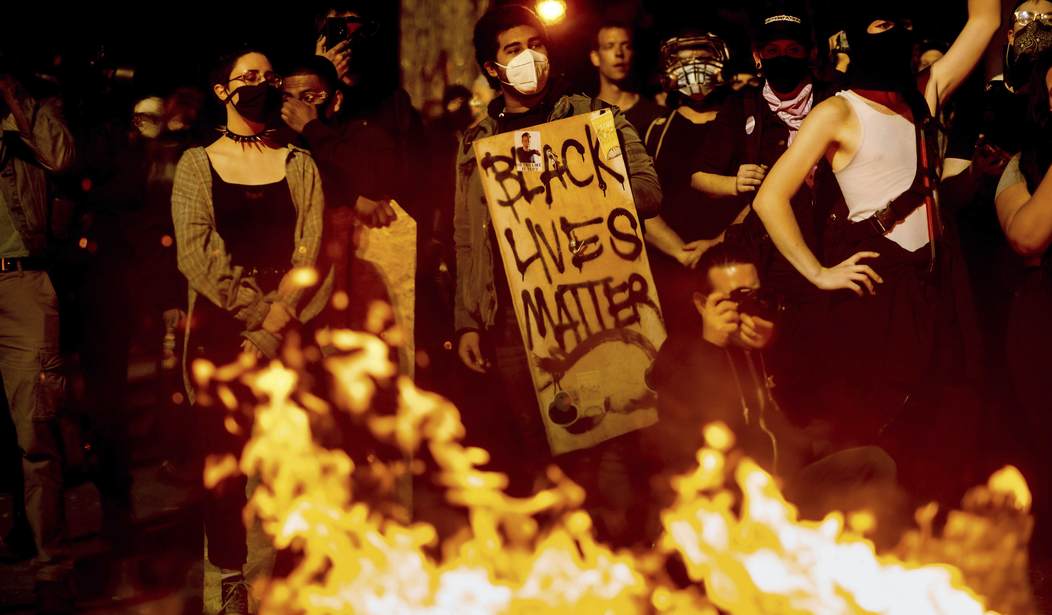Yes, I remain an odd one to be writing about the state of America's urban areas. As you all know, if you've been reading my work for more than the last six minutes, I grew up in a rural setting, I'm a happy rural dweller myself these days, and have little time for cities. I find them unpleasant; crowded, noisy, and, to be honest, they smell bad. I like the clean country air of the Susitna Valley, and if that means I have to put up with the usual fall chilly, rainy weather that's so typical of South-Central Alaska, that's fine.
With that being true, why am I still worried about America's cities? Because our cities are the beating hearts of our nation. Much of the country's economic activity happens there. Urban areas contain a lot of the country's industry and academia. What's more, our cities used to be the pride of the nation, but that's not so much the case anymore. Rampant open-air drug use, huge homeless encampments, and rampant crime are taking their toll.
Case in point: Three places, three states with decaying urban centers, give us an illustration as to how the contagion spreads. Those states are Oregon, Washington, and my former home, Colorado. Their recent history is, shall we say, revealing.
Not long ago, Colorado, Washington, and Oregon were widely hailed as states with bright futures. For decades, they attracted scores of out-of-state migrants, turning Denver, Seattle, and Portland into celebrated urban hubs.
But that changed as these states began adopting the very policies—above all on energy, housing, and regulation—that many newcomers had fled from in California. Once politically purple, Colorado, Washington, and Oregon have turned solid blue, embracing the same agenda that even the New York Times concedes has turned “the California dream” into “a mirage.”
As I've mentioned before, we lived in Colorado for 30 years. We raised our family in Colorado. We still return there twice a year or so to visit family who remain in the area, and most years I go back to join loyal sidekick Rat in the pursuit of mountain grouse, deer, and elk. It's a beautiful state, and when I moved there in 1989, it was more or less South Wyoming. Now it's East California. Just as is the case in the Pacific Coast states of Washington and Oregon, the urban areas have overwhelmed the outlying areas, and all three states are dominated by the left.
Now, they are counting the cost.
Read More: The Downfall of America's Cities: Denver, a Mile-High Mess
The Downfall of America's Cities: Our Major Cities Are All Democrat Bastions
The first sign of rot? People are leaving California - and in-migration to Colorado, Washington, and Oregon is starting to decline.
The shift in migration patterns may be the clearest sign of the three states’ Californication. Like California, these states long attracted newcomers with their remarkable natural beauty. People only began leaving California—still arguably the most beautiful state in the continental U.S., with some of the most pleasant weather on earth—when its political, economic, and cultural climate became unbearable, especially for young families.
Initially, as California began hemorrhaging residents, Washington, Oregon, and Colorado kept growing as destinations for domestic migrants. Between 2010 and 2020, Colorado gained more than 390,000 domestic migrants; since 2020, that total has fallen below 24,000, per the Census Bureau. Oregon and Washington together gained well over 600,000 net domestic migrants between 2010 and 2020, but they’ve lost more than 40,000 since 2020.
The rot began with the growth in population and the influence of these states' urban areas. Before about 2000, life wasn't too bad in these places, and the suburban/rural constituencies - the predominantly Republican areas - still had some say in state affairs. But all three seem determined to follow the California model, to establish a more or less permanent single-party majority. What's more, the economies of these states are starting to reflect that. Most notably, Colorado:
The results of Colorado’s leftward lurch are already evident. The Centennial State, once a leader in job and income growth, now ranks near the bottom in these categories. Remarkably, it’s now among the least attractive states to outsiders. Colorado’s business start-up rate has fallen and business confidence is low, tied to concern over rising regulations. Roughly half of business owners say the state is headed in the wrong direction. Destroying an economy like Colorado’s takes work, but progressives have been busy.
We should note that, yes, many of the right-leaning people who live in these places are abandoning them. They are headed for places like Texas, Tennessee, and Florida, and we might also note that while residents of those states might have cause to worry about the influx from blue states, many of those people are seeking a more accommodating political environment, not to turn the red states purple - or blue.
Increasingly, though, even red states can be dominated by the blue cities. That's what happened in Colorado, where the Denver-Boulder Axis exploded and drowned out the state's farmers, ranchers, miners, and so forth. That's what has happened in the Pacific coast states, where the coastal elites have eclipsed the more conservative people, mostly east of the mountains.
So, what can be done about this? It's one of the longest of long shots, but the one thing that might work may be the political isolation of those cities. Self-determination, in other words. Let the red areas of the states leave to form their own, new states, or to join more friendly neighbors. The voters of eastern Washington and Oregon may be more comfortable joining Idaho - or joining northern California as a version of the State of Jefferson. Colorado's northeastern plains, including Weld County and much of the South Platte drainage, may be more at home as part of Wyoming. Colorado's Western Slope may choose to join Utah.
This would require, well, a lot. A plebiscite, likely, in each state to decide the new boundaries. Congressional authorization and acceptance of any new states. It's a daunting process, but it remains a good idea, at least if self-determination is still a principle we abide by.
The possibilities are endless. And these ideas would, at least, protect the more sane voters of the outlying areas from the leftist voters in the cities, who seem determined to prove Mencken's assertion that democracy is the idea that the voters know what government they want and deserve to get it, good and hard.















